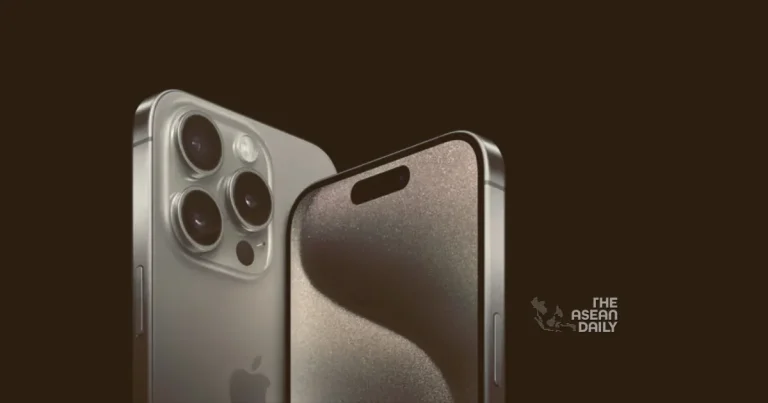21-10-2023 (TOKYO) Teardowns of Apple’s latest iPhone 15 series conducted by Nikkei have revealed that the production costs for the top-tier model have risen by approximately 10% compared to the flagship model from 2022, marking a new record high. While Apple has shouldered most of the cost increase this year, analysts speculate that the company will pass on higher component prices to its customers in 2024.
Nikkei collaborated with Tokyo-based research company Fomalhaut Techno Solutions to disassemble and analyze the costs of the four September releases: iPhone 15, iPhone 15 Plus, iPhone 15 Pro, and iPhone 15 Pro Max. The cost analysis focused on the models with the smallest built-in storage capacity.
The flagship iPhone 15 Pro Max boasts a telephoto camera with 5x optical zoom and a newly designed semiconductor device manufactured using cutting-edge 3-nanometer processing technology. The estimated production cost for this model, calculated by summing up the costs of all its parts, amounts to $558, reflecting a 12% increase compared to the 14 Pro Max model released in 2022.
During the period from 2018 to 2021, the parts costs for the Max series ranged between $400 and $450. Fomalhaut CEO Minatake Kashio noted that by 2021, all feasible steps to easily upgrade the devices’ performance had been taken. Consequently, any further performance enhancements now inevitably lead to cost increases. Last year, component costs rose by approximately 20% compared to the previous year, and this trend continues with the latest models.
The cost-to-price ratio of the iPhone 15 Pro Max, which represents the ratio of parts cost to the phone’s price, stands at 47%, a 1 percentage point increase from the 14 Pro Max. The cost of the telephoto camera, which evolved from 3x to 5x optical zoom, reached $30, 3.8 times higher than that of the 14 Pro Max released in 2022. The increased cost accounts for a structure that increases the focal length while keeping the lens small. The new frame, made of lightweight and durable titanium, costs $50, which is 43% more than a traditional stainless steel frame. Foxconn Technology, the iPhone assembler for Foxconn Group in mainland China, is the main supplier of the frame.
The latest A17 Pro chip, designed in-house and mounted on the top-tier Pro Max and Pro models, costs $130, representing a 27% increase from the A16 chip used for last fall’s top-end models. Apple outsources the production of its in-house designed chips to Taiwan Semiconductor Manufacturing Co. (TSMC). The prices of extreme ultraviolet (EUV) lithography machines, necessary for extremely fine circuit formation, have soared, leading to costlier chips.
On the other hand, the prices of NAND flash memory chips used for internal storage have dropped due to weak demand. The lowest-priced model of the iPhone 15 Pro Max is equipped with 256 gigabytes of memory, twice that of the 14 Pro Max, but the cost increase was only 5%. Apple discontinued the 128-gigabyte model for the iPhone 15 Pro Max and set the minimum price at $1,199, a $100 increase. During the unveiling of the new iPhone 15 range in September, Apple emphasized that the new entry point did not represent a price hike, as the 2022 version of the Pro Max with the same amount of memory had the same cost.
Despite the doubling of NAND flash memory, the overall cost remained relatively stable, indicating that Apple has balanced rising camera and semiconductor costs against falling memory prices.
Regarding the origin of most primary components, South Korea accounted for 29% of them based on value, an increase of approximately 5 percentage points. LG Group supplies parts that determine the structure of the telephoto camera, while Samsung Group provides the display.
The United States contributed the largest share of primary components at 33%, with Qualcomm and Broadcom supplying communications chips. Japan’s share remained unchanged at 10%. The cost-to-price ratio was more significant in the U.S., where the direct sale prices of the three models, excluding the 15 Pro Max, remained unchanged. The component cost of the cheapest iPhone 15 increased by 16% compared to the iPhone 14, reaching $423 as semiconductor devices became more expensive. The cost-to-price ratio for the low-end model increased by 7 percentage points to 53%.
The component cost of the iPhone 15 Plus grew by 10% to $442, while the cost of the iPhone 15 Pro increased by 8% to $523. Their cost ratios were 49% and 52%, respectively, representing a 4 percentage point increase from the 2022 models.
Despite rising prices for daily necessities and various services globally, analysts were surprised that Apple maintained the U.Sprices for its latest iPhones, except for the top-of-the-line model.
These pricing decisions indicate that Apple’s management is exercising caution regarding price increases that could impact sales. However, if the company continues to absorb the increased costs without passing them on to consumers, its bottom line will eventually be affected. Fomalhaut CEO Kashio suggests that Apple may attempt to raise prices next year for models other than the Pro Max. When Apple unveils the iPhone 16 series in approximately 11 months, the tech giant’s pricing strategy will likely garner more attention than ever before.




